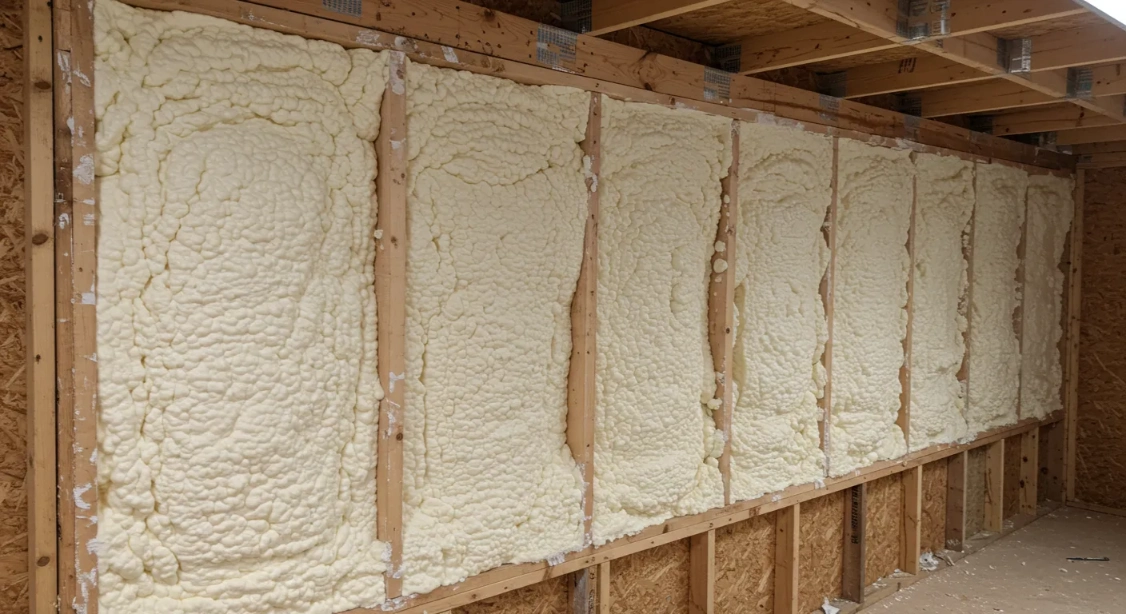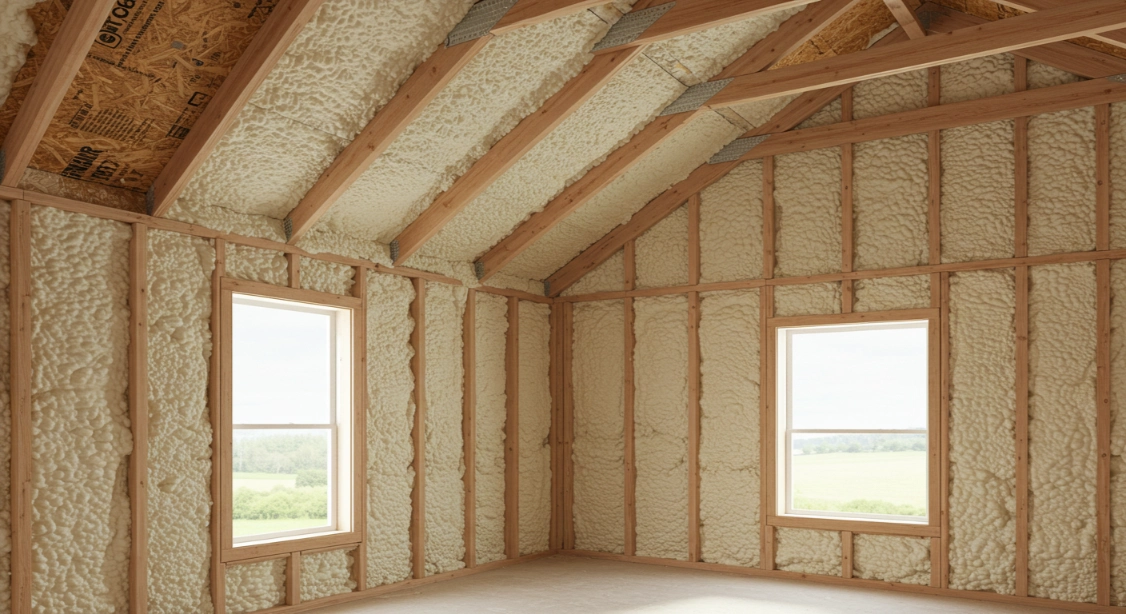Improper spray foam insulation can compromise thermal performance, cause moisture problems, and lead to high removal costs. In South Lamar, TX, where the humid subtropical climate demands precision, the most common spray foam installation mistakes include incorrect application thickness, poor substrate preparation, and inadequate ventilation planning.
This guide outlines critical errors, technical specifications, comparison data, and decision-making insights to help ensure high-quality results.
The information reflects first-hand installation experience and fieldwork across residential and commercial projects in Central Texas, ensuring practical accuracy.
Common Spray Foam Installation Mistakes
Uneven Application Thickness
Uneven layers result in thermal bridging and poor air sealing. This occurs from moving the spray gun too quickly or inconsistently.
Bonus Tip: Use a depth gauge tool during application to monitor coverage in real time.
Applying to Damp or Dirty Surfaces
South Lamar’s humidity makes it likely for surfaces to hold moisture. Spray foam does not adhere properly to wet or dusty substrates, which causes peeling and gaps.
Ignoring Thermal Barriers
Building codes in Travis County require ignition and thermal barriers in most cases. Skipping this step leads to code violations and potential fire risk.
Overlooking Mechanical Ventilation
Spray foam creates a tight building envelope. Without proper mechanical ventilation, indoor air quality can deteriorate, especially in sealed attics or crawl spaces.
Incorrect Product Choice
Open-cell and closed-cell foams serve different functions. Misapplication can reduce insulation effectiveness and durability.
Comparison Table: Open Cell vs Closed Cell Foam
| Feature | Open Cell Foam | Closed Cell Foam |
|---|---|---|
| R-Value (per inch) | ~3.6 | ~6.5 |
| Vapor Barrier | No | Yes |
| Application Use | Interior walls, attic floors | Exterior walls, basements, roofs |
| Expansion Rate | High (~100x) | Low (~30x) |
| Sound Dampening | Strong | Moderate |
Source: 2024 Texas Building Insulation Market Report, TX Energy Code Database
Technical Specifications and Compliance
| Parameter | Recommended Standard |
|---|---|
| Minimum Application Temp | 60°F surface, 70°F ambient |
| Max Lift Thickness per pass | 2 inches (Closed Cell), 3 inches (Open Cell) |
| Cure Time | 24 hours (initial set), 30 days (full cure) |
| Building Code Compliance | IRC/IBC Section R316, IECC Climate Zone 2 |
| Fire Safety Requirement | Thermal barrier required over foam surfaces |
Source: 2023 IRC Code Updates, SPFA Professional Certification Program Guide

Regional Insights for South Lamar Conditions
- Climate Factor: High humidity increases risk of substrate moisture. Use moisture meters before application.
- Code Enforcement: City of Austin inspectors frequently cite non-compliance with R316 thermal barrier rules.
- Common Structure Type: Many homes use open attic rafters. Proper attic ventilation is critical post-foam installation.
Bonus Tip: In older South Lamar homes with pier-and-beam foundations, use closed-cell foam in crawl spaces to prevent ground moisture transfer.
Things to Consider Before Making a Decision
- Inspect Existing Insulation: Remove or encapsulate old materials that interfere with adhesion.
- Assess Ventilation Needs: Determine if mechanical ventilation upgrades are needed.
- Clarify Performance Goals: For soundproofing, open-cell is better. For moisture control, closed-cell is preferred.
- Understand Code Requirements: Confirm local code expectations on fire safety and barrier use.
- Project Scope: Small jobs may not justify closed-cell costs unless moisture control is critical.
Common Questions About Spray Foam Installation
Is spray foam safe for indoor use? Yes, once cured. During installation, proper PPE and ventilation are necessary.
How long does spray foam last? Properly installed spray foam can last 30-50 years without degradation.
Can it be removed later? Removal is difficult and labor-intensive, particularly with closed-cell foam. Removal costs often exceed installation.
How does it perform in extreme heat? Both foam types provide strong thermal resistance. Closed-cell offers higher resistance to radiant heat in attics.
What causes spray foam to shrink or pull away? Improper substrate temperature or high humidity during installation can lead to shrinkage.
Services Relevant to Spray Foam Installation Quality
Residential Insulation
Spray foam installation tailored to homes in humid Central Texas conditions.
Open Cell Insulation
Effective for interior applications where sound control and flexibility are priorities.
Closed Cell Insulation
Ideal for moisture-prone areas such as crawl spaces or external walls.
Crawl Space Insulation
Applied in challenging underfloor spaces to block moisture and air infiltration.
Get Expert Insulation Guidance
For questions about insulation options, product types, or compliance for your South Lamar property, contact:
Stellrr Insulation & Spray Foam 📞 (512) 710-2839 ✉️ info@stellrr.com
Get experienced answers backed by extensive hands-on work across Central Texas properties.
FAQ
What’s the ideal time of year to install spray foam in South Lamar?
Spring and fall are best. Avoid peak summer humidity unless climate controls are in place.
Can existing insulation remain under new spray foam?
No. It obstructs adhesion and can trap moisture. Always remove before installation.
Does foam insulation attract pests?
No. Spray foam does not serve as a food source and seals entry points effectively.
Will it lower utility bills?
Yes. Properly applied foam significantly reduces HVAC load and energy use.
Can DIY kits achieve professional-grade results?
Not reliably. Inconsistent mixing and lack of safety controls often lead to poor outcomes and code violations.

